The Skies of Mini-Neptunes
Sniffing the Air of Other Worlds to Learn How Planets Formed and Evolved
HANNAH WAKEFORD is the Giacconi Fellow at the Space Telescope Science Institute in Baltimore, Maryland.
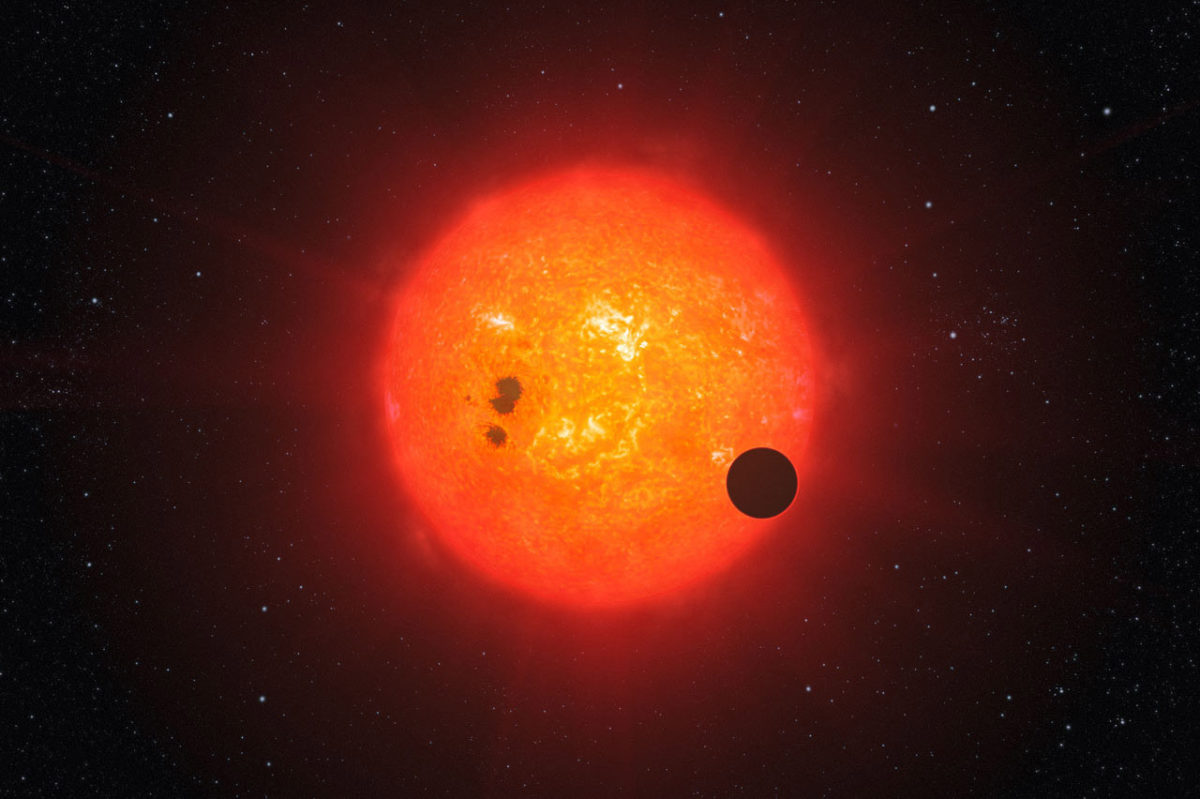
A great quest is underway to discover Earth-size worlds in their stars’ habitable zones. Along the way, astronomers have been surprised to learn that the most typical size of planet in our galaxy is one with no counterpart in our own solar system.
These planets are called super-Earths or mini-Neptunes. They populate an unfamiliar regime of worlds. They are larger than Earth, the Sun’s biggest rocky world, yet smaller than Neptune or Uranus, which are about 4 Earths in diameter. In fact, an exoplanet detected as it transits across the disk of its host star is 4 times more likely to have a size in the super-Earth/mini-Neptune regime than to be bigger than Neptune. These discovery statistics are telling us something—but what?
The ice giants of our solar system, Uranus and Neptune (see “The Realm of the Ice Giants,” page 7), represent a transition from a hydrogen-dominated mass, such as that seen in Jupiter and Saturn, to a mass defined more by solid or liquid ices deeper in the atmosphere formed of “heavy” elements (atoms more massive than helium). Such planets still have a hydrogen-helium outer envelope, but their mass is dominated by a deep, fluid ocean made of heavy, icy material and potentially a rocky core. By contrast, terrestrial planets have rock and metal compositions and relatively thin atmospheres containing little to no hydrogen or helium.
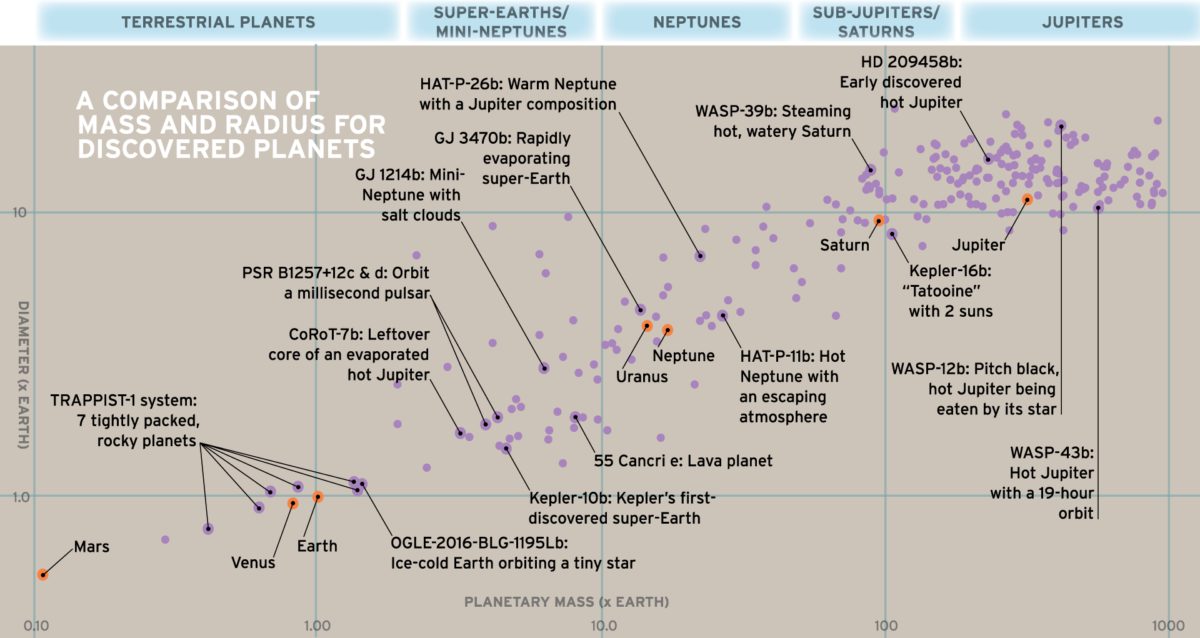
At what point does a planet stop being mostly rock and transition to one that’s mostly hydrogen and helium? For now, the answer is unknown, but we are trying to figure it out.
NASA’s Kepler spacecraft, whose impressive 9-year mission ended in November 2018, was launched to observe 150,000 Sun-like stars continuously in order to discover Earthsized planets on year-long orbits. It used a detection method called the transit technique, which looks for the dimming of a star’s light caused by a planet passing in front of the star from our point of view. The use of this method to search for extrasolar worlds was suggested in the 1600s by Dutch astronomer Christiaan Huygens. He reasoned that just as we can see the Galilean moons pass in front of Jupiter, we should be able to see planets do the same thing by looking toward the stars.
Over the course of its mission, Kepler collected data on more than 500,000 stars and revealed that there must be more planets in our galaxy than stars. Moreover, Kepler found a hugely diverse population of planets—more than 2,500 in all—orbiting any and all types of stars, from planetary debris falling onto hot, dense, white dwarfs to small, rocky worlds orbiting small, cool stars (known as M dwarfs) and everything in between. Of the roughly 4,000 exoplanets known at the end of 2018, more than half of the ones with a measured diameter fall in the super-Earth/mini-Neptune regime. These objects have diameters 1.6 times to 4 times that of Earth.
To characterize the atmospheres of one of these strange new worlds and find out of what it is made, we primarily measure the absorption spectrum of its atmosphere, called a planetary transmission spectrum. As a planet passes in front of its star, some of the starlight we record filters through the planet’s atmosphere before it reaches us. Imprinted on the starlight are the spectral fingerprints of the molecules that make up the planet’s atmosphere. Each molecule absorbs specific wavelengths of light, changing the amount of light we measure from the star. If we detect these specific changes, the molecules can be identified using databases of molecular absorption signatures and models. For example, water vapor has distinct absorption signatures in the near-infrared, which can also be measured in Earth’s atmosphere.
For this measurement to succeed, the star needs to be bright enough to emit many photons toward the planet, and the planetary atmosphere has to be extended enough for as many of those photons as possible to pass through the planet’s atmosphere—where some of those photons are absorbed, scattered, or reradiated by different molecules—before they complete their journey to our telescopes.
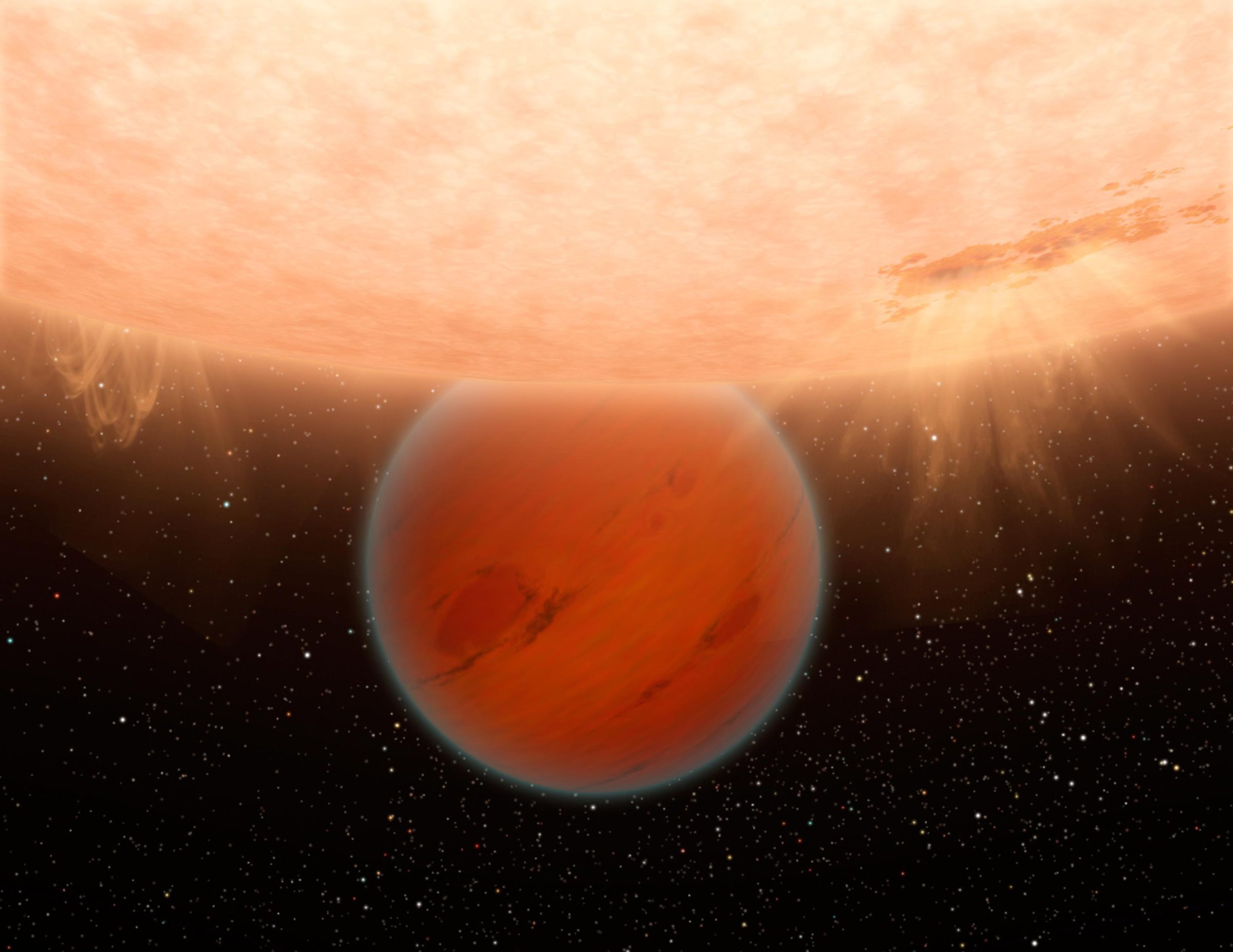
Case Studies
One of the most famous super-Earths/mini-Neptunes, designated GJ 1214b, was discovered by the ground-based MEarth project (pronounced “mirth”) in 2009, even before Kepler entered the science phase of its mission. GJ 1214b is a small, gassy world 2.6 times the size of Earth but just a third of its density, and at the time it was thought to be a rarity in exoplanets. Given its mass and diameter, this planet could potentially consist of a rocky core with a hydrogen-helium atmosphere hundreds of kilometers deep, or it could be a world covered in a deep ocean and atmosphere of steam.
To find out what this puffy little planet is made of, astronomers have scrutinized it with numerous ground- and space-based telescopes. These measurements show that the planet’s atmosphere is very effective at blocking its star’s light. Observers expected to find strong spectral fingerprints from water vapor in the atmosphere, but instead they saw a complete absence of any such features. The absence of such features doesn’t necessarily mean water is absent, but the question is: what could be blocking starlight so uniformly across all wavelengths? The answer: clouds.
Clouds are prevalent around all bodies in our solar system that have an atmosphere. They probably are just as prevalent on exoplanets and challenge our ability to characterize them. In some cases, clouds can help us study the dynamics and temperature of an atmosphere, but their opacity makes it difficult to accurately determine the abundances of other compounds in a planet’s air.
To really understand a planet’s composition—and thus to determine if it belongs in the “rocky” or “gassy” category—we need to measure the amounts of different materials in its atmosphere. Our best approach is to look for gaseous materials in a planet’s atmosphere—since diffusion would distribute these materials equally everywhere. By identifying a molecule and—where possible—its abundance, we can understand more: the planet’s energy budget (how it deals with incoming and outgoing radiation), its chemistry (what reactions are occurring and whether there’s more or less of something than we’d expect), and its dynamics (how all of these interact with one another). Each of these supplies clues to the formation and evolution of the planet.
Water is the most useful of these molecules. Water is the third-most abundant molecule in the universe, trailing only molecular hydrogen (H2) and carbon monoxide (CO). It is very stable and exists in all phases in a vast array of astrophysical contexts. Of course, it is essential for life as we know it. Water’s abundance remains relatively constant under equilibrium conditions at all temperatures (as long as more oxygen than carbon is present), so it’s likely to be well mixed throughout hot, giant-planet atmospheres. The Hubble Space Telescope makes it relatively easy to detect water vapor in the atmospheres of giant exoplanets, resulting in its identification in 80 percent of the planets that we’ve observed. However, determining water’s abundance is still difficult: only 5 percent of Hubble’s measurements yield definitive constraints on how much water is present.
Here in our own solar system, there’s an interesting trend among the outer planets: an atmosphere’s proportion of heavy elements increases as the planet’s mass decreases. For example, compared to their relative abundance in the Sun, Jupiter has 4 times more heavy elements, Saturn has 10 times, and Neptune and Uranus have about 100 times. If we use water vapor in an exoplanet’s atmosphere to estimate the abundance of oxygen (and thus all heavy elements), then we can determine whether this trend applies in other planetary systems.
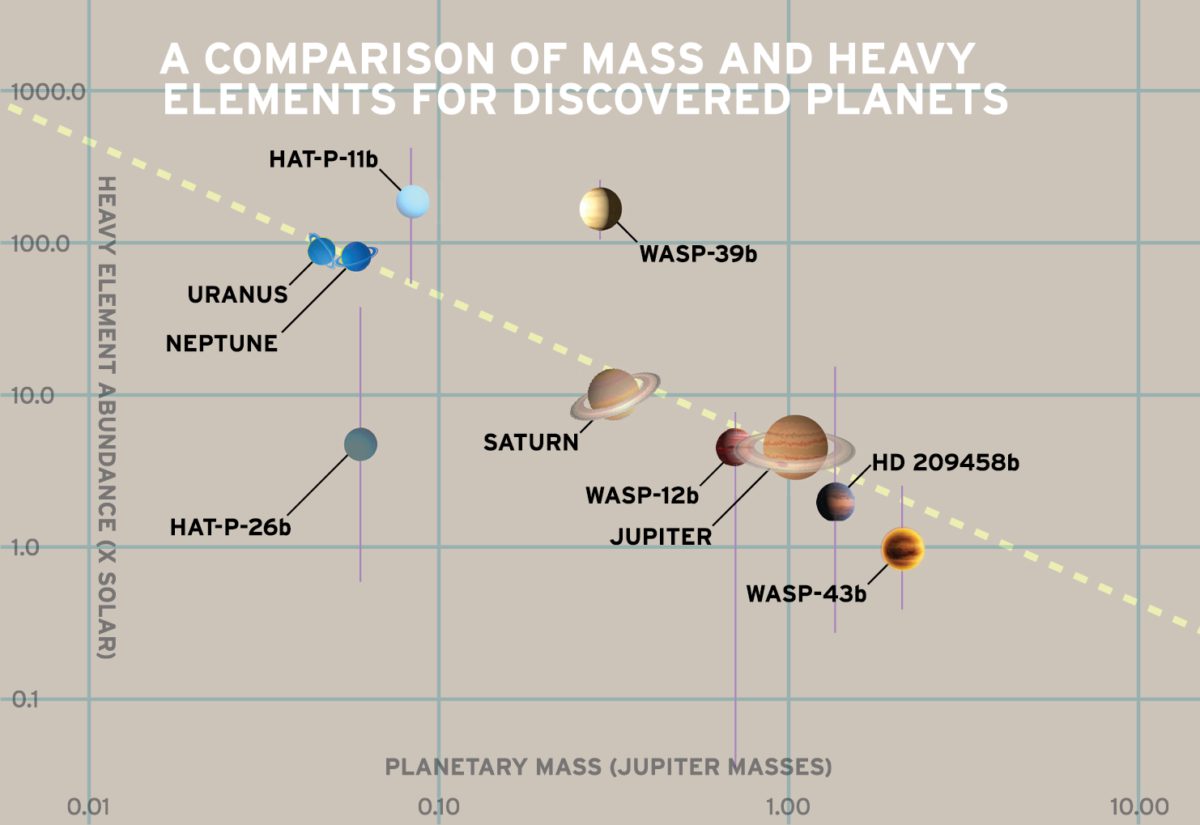
The first definitive measurement of this type was conducted on WASP-43b, a world with twice the mass of Jupiter. Its heavy elements have relative abundances matching the Sun’s, fitting the expected trend.
Subsequent observations with Hubble revealed water vapor in the atmospheres of smaller exoplanets, such as the Saturn-mass world WASP-39b and the Neptune-mass worlds HAT-P-11b and HAT-P-26b. However, these planets didn’t fit the solar system pattern. The “warm Saturn” WASP-39b has an atmosphere with, proportionately, 150 times more heavy elements than the Sun. Meanwhile, the atmosphere of Neptune-mass HAT-P-26b comes in at between 1 times and 30 times the Sun’s value, but that of the somewhat smaller world HAT-P-11b has anywhere between 90 times and 700 times the solar abundance of heavy elements!
These results suggest that our solar system’s pattern isn’t necessarily relevant elsewhere—particularly in the lower-mass regime of the ice giants—and that exoplanet atmospheres are likely far more diverse than our backyard examples. Using our planetary system to assess others is proving not to be the apples-to-apples comparison we hoped it would be. Every measurement we make of exoplanet atmospheres just serves to expand the diversity of the population of worlds we’ve studied.
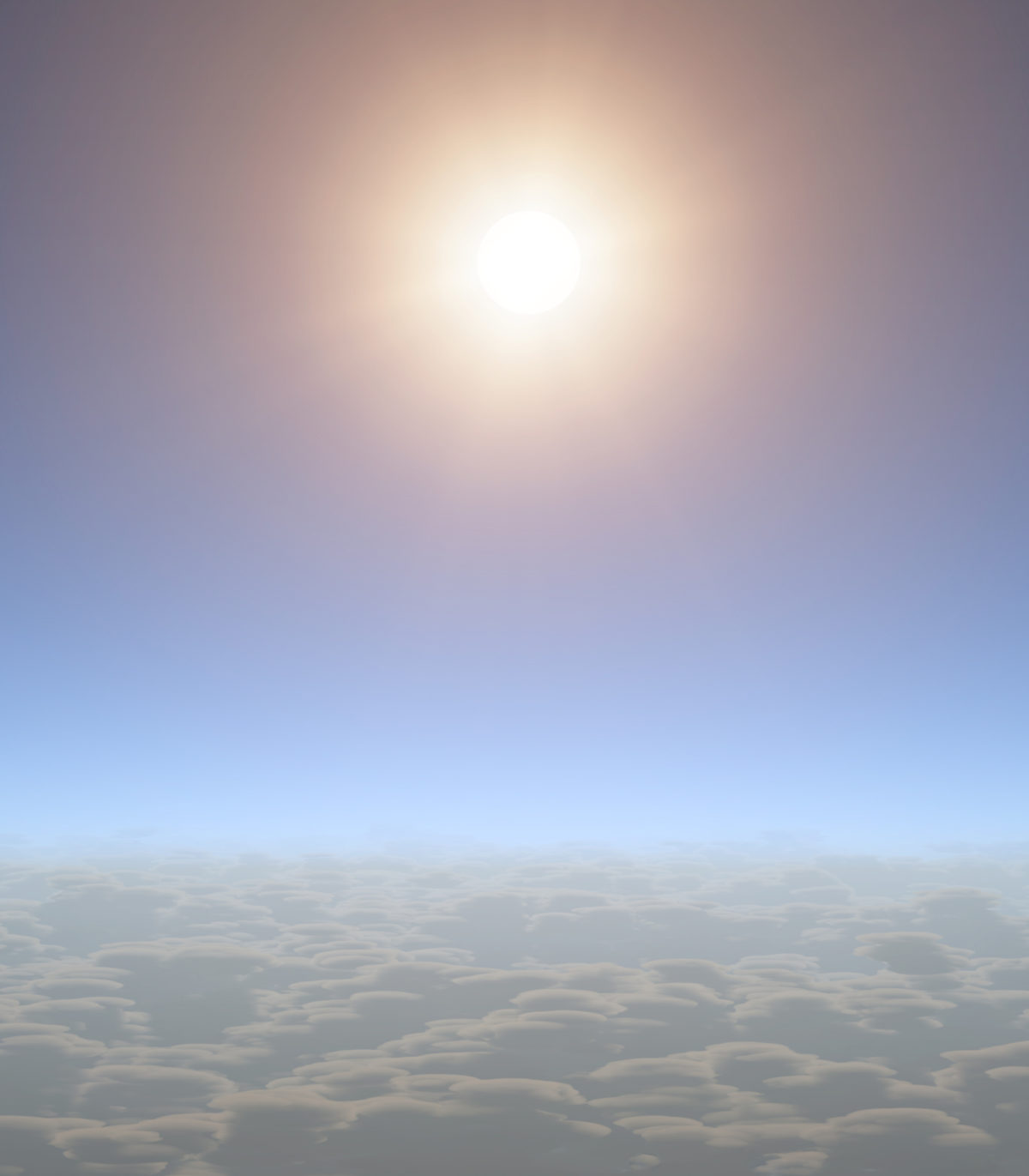
As of now, astronomers can only discuss which molecular species are present in exoplanet atmospheres. In the coming years, we hope that our observations will establish definitive constraints on the abundances of those species. Only then will astronomers be able to push further and further into the super-Earth/ mini-Neptune regime.
NASA’s Transiting Exoplanet Survey Satellite (TESS), launched in April 2018, could discover hundreds of new planets around bright stars—perfect candidates for follow-up observations on their atmospheres. Meanwhile, we await the 2021 launch of the James Webb Space Telescope, which should be able to measure and constrain both water and carbon-bearing species in those planets. Our study of exoplanet atmospheres will advance by leaps and bounds!
Super-Earths and mini-Neptunes occupy crucial positions in the continuum of planetary atmospheres. As we look forward to detecting a plethora of smaller planets with the transit technique, we’ll also be surveying smaller, cooler stars whose attendant planets will also likely span a wider range of temperatures. Smaller, cooler planets allow us to explore the effects that a planet’s mass has on the chemical reactions in its atmosphere as well as the relative abundance of carbon-bearing molecules to hydrogen and helium.
For now, however, definitive detections of carbon-based species remain elusive. Photometric observations by the Spitzer Space Telescope aren’t good enough to identify their molecular absorptions with certainty. For its part, Hubble has yet to find a planet with definitive evidence of methane in its atmosphere. However, we are constantly learning new things with each observation, and there are plenty of giant exoplanet atmospheres left to explore. The big question we hope to answer is: what can we learn about our own solar system—its architecture, formation, and evolution—by looking out to these strange new worlds?
Let’s Go Beyond The Horizon
Every success in space exploration is the result of the community of space enthusiasts, like you, who believe it is important. You can help usher in the next great era of space exploration with your gift today.
Donate TodayThe Planetary Report • March
Help advance space science and exploration! Become a member of The Planetary Society and you'll receive the full PDF and print versions of The Planetary Report.


 Explore Worlds
Explore Worlds Find Life
Find Life Defend Earth
Defend Earth


